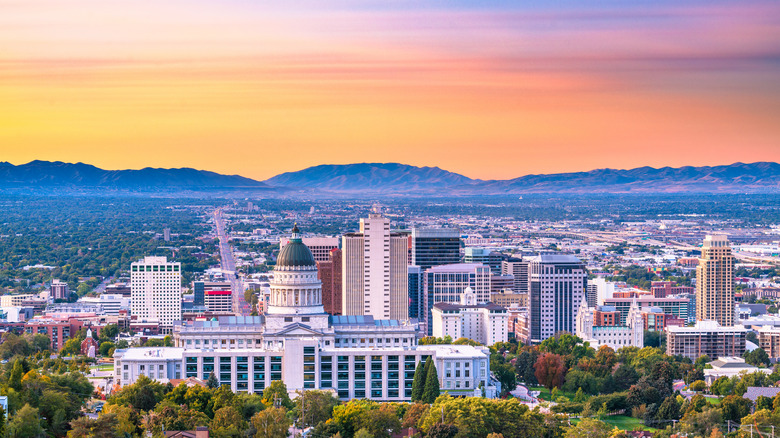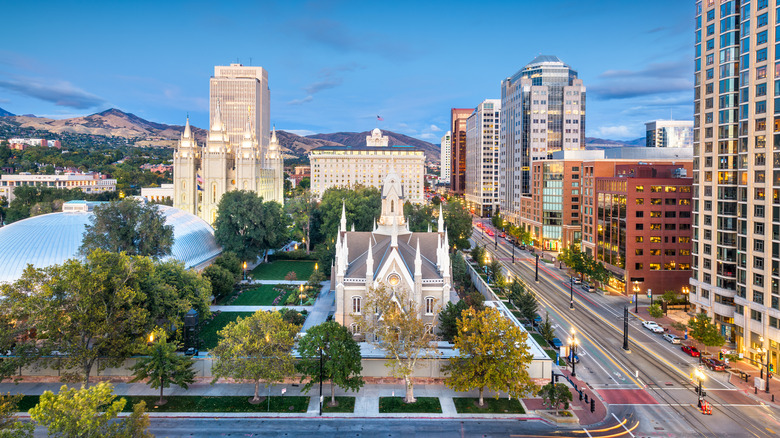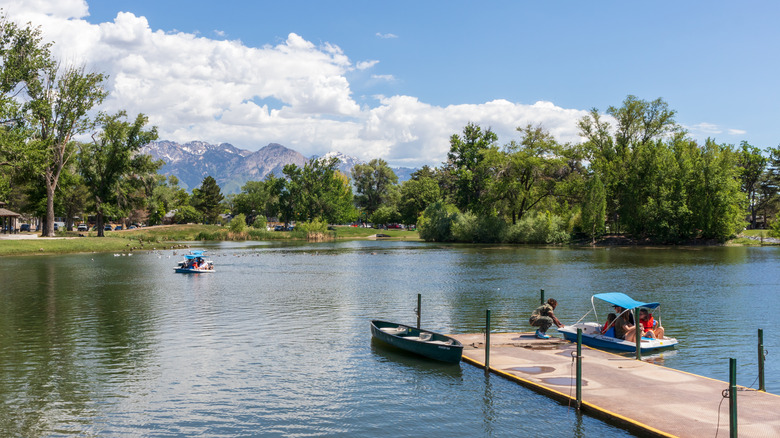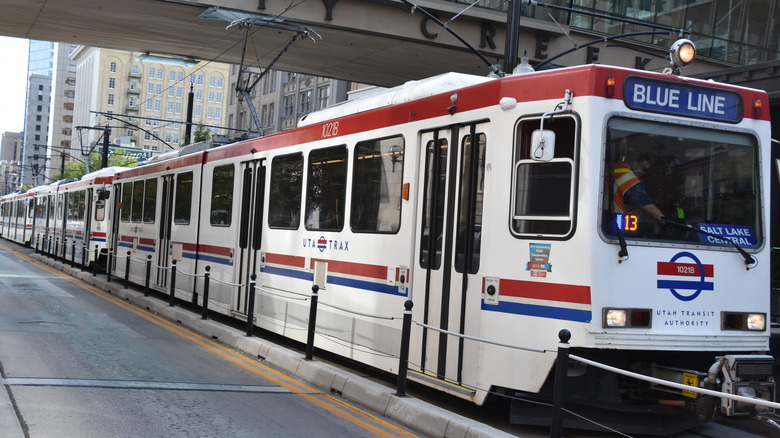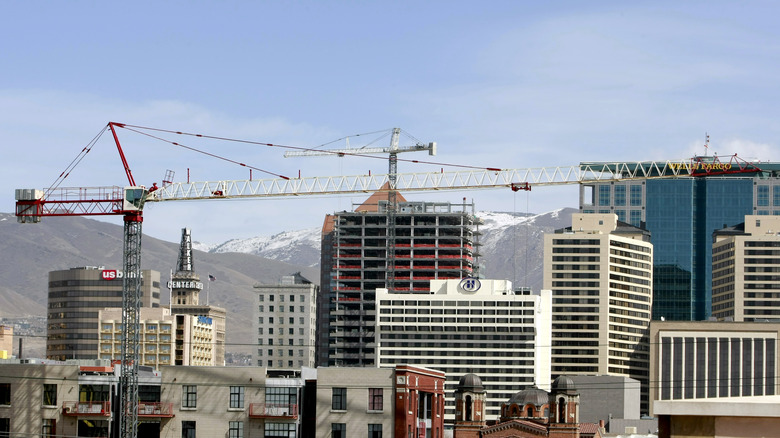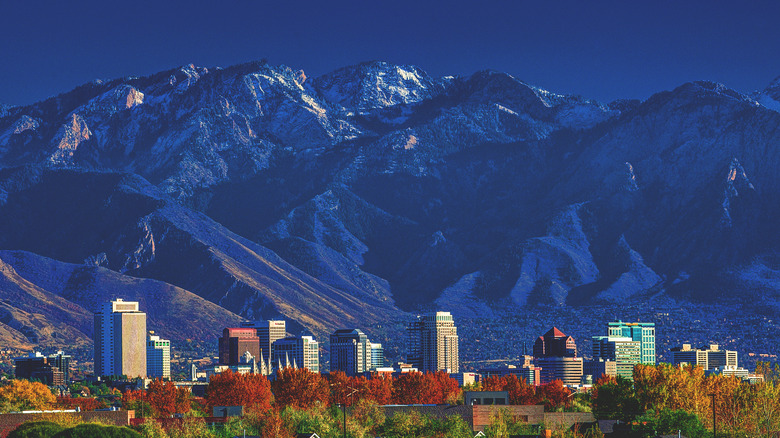The Best Place To Live In Utah
Utah may be the United States' most underrated state, but more and more people are discovering all there is to love about the Beehive State. According to The Salt Lake Tribune, Utah is one of the fastest growing states in the United States, with newcomers to Utah citing its access to the outdoors, perennially sunny weather, and relatively affordable housing market as significant drivers for relocating to the state.
If you have considered relocating to the beautiful high desert and mountainous Utah landscape, you may be wondering which of the many cities and neighborhoods within the state would be the best match for you. A study from Niche, which drew on a variety of different sources, including census data, school rankings, housing prices, and resident reviews, recently determined that multiple neighborhoods in Salt Lake City, the capital and the largest city in the state, represent the most desirable spots to settle in the great state of Utah. Salt Lake City is home to excellent areas, including the Greater Avenues neighborhood, the East Liberty Park neighborhood, the Sugar House neighborhood, and the Cottonwood Heights neighborhood. The city also features an urban feel while still having access to green spaces and, of course, proximity to Utah's famous Wasatch Mountain Range for all of your outdoor recreation needs.
Historic and beautiful homes and neighborhoods
You may not think Utah has a rich history like many older East Coast states that predate the American Revolution. However, Salt Lake City was the first city built by members of the Church of Jesus Christ of Latter-Day Saints (often referred to as the Mormon Church) when they settled in Utah. It is home to some of the oldest and most historic buildings and neighborhoods in the American West. As the Niche report details, some of the homes on the northeastern side of the city, known as the Greater Avenues neighborhood, are older than the state of Utah itself! These historic residences give the neighborhoods in Salt Lake City a unique look and feel.
And homes are not the only edifices of historical significance within Salt Lake City — anyone interested in the history of the American West and architecture associated with the late 1800s will enjoy a walk around downtown Salt Lake City, particularly Temple Square, home to the very first temple of the Mormon Church. Temple Square, according to the Church of Jesus Christ of Latter-Day Saints, provides five blocks worth of landmarks, tour options, and historic sites related to the origin story of the Mormon settlers in Utah.
Beautiful outdoor spaces, both in the city and out
Salt Lake City is home to a large number of amazing and easily accessible parks. Liberty Park is the oldest park in Salt Lake, and, according to the Salt Lake City Public Lands Department, it has some of the best park-related amenities in the city, including multiple playgrounds and pavilions, a well-developed jogging trail, and fantastic cultural spots such as the Tracy Aviary, a miniature zoo featuring bird exhibits. Another great park option, particularly for dog owners, is Fairmont Park. Dog Friendly SLC explains that Fairmont Park hosts an annual event called Yappy Hour, which brings together animal-focused businesses within the community, dog rescue organizations, and food trucks serving dog-friendly meals for a large event celebrating everything wonderful about our fur babies.
No description of Salt Lake City would be complete without discussing the nearby Wasatch Mountains and all they have to offer. There are 11 ski resorts within an hour's drive of Salt Lake City, according to Visit Utah. As Visit Salt Lake describes, there are a wide variety of hiking, cycling, and mountain biking trails in and around Salt Lake, as well as a range of different rock climbing and camping spots. The Wasatch Mountains also feature several hunting and fishing areas. No matter what your preferred form of outdoor recreation may be, Salt Lake City has an abundance of options for you.
Excellent public transportation
As compared to the rest of Utah and the American West, the public transit system in Salt Lake City really stands out. The Utah Transit Authority provides a wide range of different public transportation options all along the Wasatch Front (the name locals have given to the metropolitan area stretching along the western side of the Wasatch Mountains), with its main hubs within Salt Lake City. These transit options include the FrontRunner train system, which gives residents easy access to suburbs of Salt Lake and other major cities north and south of the Salt Lake City area, including Ogden and Provo (home of Brigham Young University). Within Salt Lake City, the Transit Express light rail system, commonly referred to as TRAX, provides a network of transit routes throughout the city, from the benches of the mountains to the heart of downtown.
Salt Lake City is also committed to continually improving its public transportation systems. According to Funding Our Future SLC, the city recognizes that increased growth in the area will require additional and innovative transit solutions, and funding, resources, and expertise are devoted to developing solutions that will best serve all current and future city residents.
A thriving and diverse economy
Salt Lake City offers a wide range of career opportunities for professionals in all stages of their career development. In addition, the state of Utah is considered one of the most economically sound and "recession-proof" states in the country, explained KSL-TV. Salt Lake City is home to several economic drivers that power the economic prosperity within the entire state, including the University of Utah, the Salt Lake City International Airport (a Delta airlines regional hub), and, according to the Federal Deposit Insurance Corporation, the largest industrial banking sector in the United States. The Salt Lake metropolitan area also features a burgeoning technology hub, intended to eventually rival Silicon Valley in terms of start-up success and technology innovation (the organization overseeing technology development in the region is aptly named Silicon Slopes).
And it is impossible to forget the many career opportunities offered by Salt Lake City's close proximity to stunning mountain ranges and world-renowned ski resorts. If you are interested in working in outdoor recreation or hospitality, it would be hard to beat the options you will find living in Salt Lake City.
Accessible cost of living
Salt Lake City is a much more affordable place to rent or even buy a home compared to other cities of similar size, particularly in the American West. Data from the Niche shows that the median rent for apartments in Salt Lake City comes in at $1,050, slightly under the national average of $1,096. However, the median home value in the city is $346,100, compared to the national average of $229,800.
The composition of people who own their home within the city versus people who are renting their primary abode from a landlord is about 50/50. The higher rental rates may be due to Salt Lake's disproportionately younger population, as explained by USA Facts, and the fact that it is home to three colleges (the University of Utah, Westminster College, and Salt Lake City Community College, via Niche), which tend to attract residents interested in more temporary accommodations. The mix of owners and renters within the city helps contribute to both the eclectic feel of many of the city's neighborhoods, as well as long-term community investment in the city and its growth.
